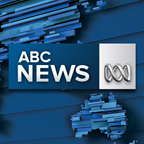
Updated
It is not exactly the elephant in the room, as Australia's five Super Rugby coaches have had no choice but to ponder the question often ahead of the 2017 season.
It still, however, provides for some nervous moments: how do they beat their New Zealand rivals?
Not only did the Wallabies endure a comprehensive beating at the hands of the All Blacks in 2016, losing all three Bledisloe Cup Tests, but the Australian provinces barely laid a glove on New Zealand's five teams in Super Rugby.
In 25 matches contested against New Zealand opponents during the regular season and finals, Australia's contingent - the Brumbies, New South Wales, Melbourne Rebels, Queensland and Western Force - won only three matches, drew another and lost the remaining 21.
The Rebels and Force both went 0-5 when they met trans-Tasman opposition, losing records highlighted by the 85-26 annihilation the Melbourne-based franchise copped at the hands of the Crusaders in Christchurch late in the season.
The Brumbies, Australian conference winners in 2016, did not fare much better, having won only one of five encounters with New Zealand teams, a 52-10 victory over eventual champions the Hurricanes in Canberra in the opening round.
It was a win-loss return that was foremost in the mind of Brumbies coach Stephen Larkham when he and his staff began plotting their 2017 campaign late last year.
"In review of the season we looked at the New Zealand teams in particular and how do we play better against those," Larkham told Grandstand.
"We had a very good record against Australian teams, we didn't drop a game against an Australian team, which is what put us in good stead for the finals.
"But we had a terrible record against New Zealand teams just winning one of those games.
"So we spent a lot of time, especially pre-Christmas, looking at what we need to modify in our game both defensively and in attack."
Larkham's respect for New Zealand rugby is shared by his Reds counterpart and former Wallabies team-mate Nick Stiles, who as interim co-coach in 2016 endured a 50-5 thrashing at home to the Chiefs but did witness his side post a 28-27 victory over reigning champions the Highlanders.
"The way they (New Zealand teams) play the game is just so well ingrained around field position and preying off your mistakes and being so good at that unstructured football, it's just so natural to them," Stiles said.
"I would like to think we are closing the gap with the Australian sides to the Kiwis but to do that is going to take time and a lot of hard work. You take the little steps as you go along the way."
 Photo:
Reds half-back Nick Frisby celebrates a rare Australian victory over the Highlanders in 2016. (AAP Image: Glenn Hunt)
Photo:
Reds half-back Nick Frisby celebrates a rare Australian victory over the Highlanders in 2016. (AAP Image: Glenn Hunt)
The "little steps" Stiles refers to has everything to do with improving depth in Australian rugby.
The shallowness of Australia's player stocks is a point of heated debate, especially with talent much more evenly spread across New Zealand's franchises, a point acknowledged by Waratahs captain Michael Hooper with a mix of admiration and envy.
"They're all pretty sharp, aren't they? Their middle-tier of players is terrific," Hooper said.
Axing one of Australia's five Super Rugby franchises - with the Force and Rebels in the crosshairs - as a way of consolidating talent in the remaining four teams has been widely spoken about, but shrinking the player pool and eroding rugby's attempt at establishing a national footprint are potential by-products.
The creation of the third-tier National Rugby Championship (NRC) in 2014, an answer to New Zealand's strong provincial competition, is one measure the Australian Rugby Union has taken to address the issue of depth, for which it should be applauded.
Time and patience are needed for the NRC to bear fruit, but they appear to be in short demand as the concept faces heavy criticism due to its financial cost and opposition from existing lower-tier clubs, especially in Sydney's Shute Shield.
Stiles coached Brisbane City to back-to-back championships in the first two years of the NRC and he points to the younger members of his Reds squad - such as Andrew Ready, Adam Korczyk and Izaia Perese - as evidence the competition is having an impact on improving player depth.
"The growth they got out of it (NRC) has put that group of players in a good position now," he said.
"They can become starters or push to become a starter in Super Rugby and create a lot more depth in the squad.
"That's where we are at."
There is reason to believe the Reds, with the likes of Wallabies captain Stephen Moore, George Smith and Quade Cooper playing alongside the aforementioned sprinkling of youth, will fare better against New Zealand teams in 2017 and they will get their first chance when they host the Crusaders in round three.
The Crusaders, meanwhile, will meet the Brumbies in Christchurch this Saturday, providing Larkham with the opportunity to gauge whether his preseason planning has hit its mark.
"We've got the Crusaders first up, so the focus of being better against the New Zealand teams will be tested in that first round," Larkham said.
The Super Rugby season kicks off on Thursday evening with the Rebels hosting another trans-Tasman clash against the Blues at Melbourne's AAMI Park.
Topics: rugby-union, super-rugby, sport, canberra-2600, brisbane-4000, sydney-2000, melbourne-3000, perth-6000
First posted






 Add Category
Add Category